While the question appears similar to others, there's a key difference in my mind.
- I want to be able to calculate and/or print (graphing it would be the ultimate goal, but calculating it in the data frame the primary goal) the peak value of a density curve of EACH SUB-CONDITION BY FACET The density graph looks like this:

So, ideally, I would be able to know the intensity (x-axis value) corresponding to the highest peak of the density curves for each condition.
Here's some dummy data:
set.seed(1234)
library(tidyverse)
library(fs)
n = 100000
silence = factor(c("sil1", "sil2", "sil3", "sil4", "sil5"))
treat = factor(c("con", "uos", "uos+wnt5a", "wnt5a"))
silence = rep(silence, n)
treat = rep(treat, n)
intensity = sample(4000:10000, n)
df <- cbind(silence, treat, intensity)
df$silence <- silence
df$treat <- treat
- What I've tried:
- Subsetting the primary DF and going through and calculating the density of each condition, but this could take days
- Something close to this answer: Calculating peaks in histograms or density functions but not quite. I think the data look better as a histogram personally, but that constructs an arbitrary number of bins for intensity data (a continuous measure). The histogram looks like this:

Again, it would be sufficient to get the peak values for each of these groups (i.e., treatments by silencing subdistributions) just in the console, but adding them as a vertical line in the graphs would be a sweet cherry on top (it could also make it hella busy, so I will see about that piece later)
Thank you!!


